Address
304 North Cardinal
St. Dorchester Center, MA 02124
Work Hours
Monday to Friday: 7AM - 7PM
Weekend: 10AM - 5PM
Address
304 North Cardinal
St. Dorchester Center, MA 02124
Work Hours
Monday to Friday: 7AM - 7PM
Weekend: 10AM - 5PM
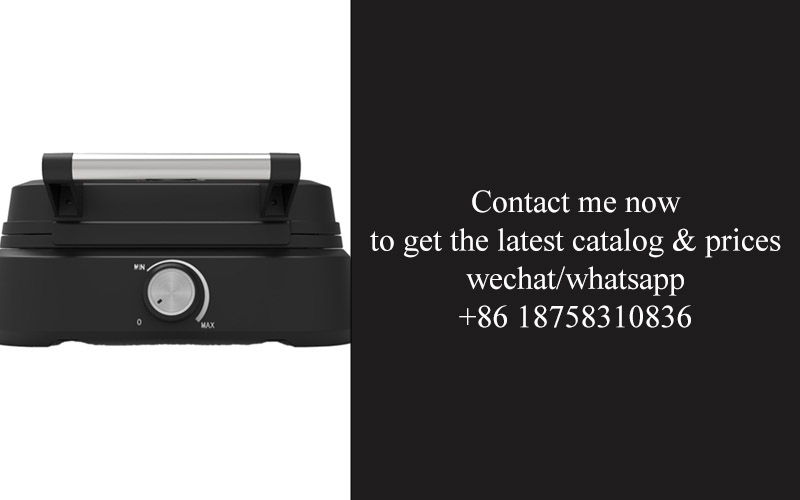
In the ever-evolving landscape of kitchen appliances, the air fryer has emerged as a star player, reshaping the way we cook and enjoy our meals. As we delve into the dynamic world of air fryer technology, it’s clear that innovation and market trends are at the forefront, shaping the future of this popular kitchen gadget.
The air fryer has quietly risen to become a must-have appliance in modern kitchens around the globe. Once a niche product, it has now transitioned into a staple, transforming the way we cook and enjoy our meals. Let’s dive into the fascinating journey of air fryers and their meteoric rise in the kitchen appliance sector.
Once considered a quirky kitchen gadget, the air fryer has now become a staple in many homes, offering a healthier alternative to traditional frying methods. This shift in consumer preference can be attributed to several factors, including an increased awareness of health and wellness, the convenience of modern living, and the innovative technology that has been integrated into these appliances.
The health-conscious movement has played a significant role in the air fryer’s popularity. With the rise of heart-healthy diets and low-fat cooking trends, the air fryer’s ability to cook food with little to no oil has become a game-changer. Consumers are now more inclined to purchase kitchen appliances that align with their lifestyle choices, and the air fryer checks all the boxes.
Moreover, the convenience factor cannot be overlooked. Life is fast-paced, and families are often juggling work and family commitments. The air fryer’s ability to cook a variety of dishes in a short amount of time, with minimal cleanup, has made it an indispensable kitchen tool. It’s no surprise that many busy households have embraced this versatile appliance.
But it’s not just the health benefits and convenience that have propelled the air fryer into the spotlight. The technology behind these appliances has seen remarkable advancements, making them more efficient and user-friendly. Modern air fryers now come with smart features, such as adjustable temperature controls, preset cooking programs, and even WiFi connectivity for remote monitoring.
As the demand for air fryers has surged, so has the competition in the market. New brands and manufacturers are constantly striving to innovate and outdo each other, leading to a diverse array of air fryer models that cater to various cooking preferences and budgets. From countertop models to built-in ovens, the variety is almost endless.
One of the key reasons for the air fryer’s success is its versatility. It can cook a wide range of foods, from crispy French fries and chicken wings to healthy vegetable snacks and even desserts. This flexibility has allowed the air fryer to carve out a niche in the market that extends beyond just the health-conscious consumer.
Furthermore, the air fryer’s environmental appeal has also contributed to its popularity. By reducing the need for deep frying, which requires large amounts of oil and generates more waste, the air fryer aligns with the growing movement towards sustainability and eco-conscious living.
The air fryer’s journey from a curious novelty to a kitchen staple has been a testament to the power of innovation, consumer demand, and the desire for healthier, more convenient lifestyles. As we continue to see advancements in technology and a deeper understanding of health and wellness, it’s likely that the air fryer will maintain its position as a favorite in the kitchen appliance sector for years to come.

The FOB Ningbo advantage is a term that encapsulates the unique benefits that this bustling port city in China offers to the global kitchen appliance sector, particularly in the realm of air fryers. Ningbo’s strategic location, robust infrastructure, and supportive business environment have positioned it as a cornerstone in the export of air fryers worldwide.
Ningbo’s geographical advantage is undeniable. Situated on the southeastern coast of China, it boasts direct access to some of the most important international shipping routes. This proximity to the sea means that manufacturers in Ningbo can efficiently distribute their products to markets across the globe, reducing transit times and costs. The city’s deepwater port is one of the largest in China, capable of handling vast quantities of cargo, ensuring that air fryer suppliers can scale their operations without logistical hurdles.
The infrastructure in Ningbo is another key factor. The city is equipped with state-of-the-art production facilities, which are crucial for the assembly and manufacturing of air fryers. These facilities are designed to meet the highest standards of quality and efficiency, allowing manufacturers to produce air fryers that are not only functional but also aesthetically pleasing. Additionally, Ningbo’s transportation network is highly developed, with a well-connected road, rail, and sea system that supports the smooth movement of goods to and from the port.
The business environment in Ningbo is conducive to growth and innovation. The local government has implemented policies that encourage foreign investment and the development of export-oriented industries. These policies include tax incentives, streamlined customs procedures, and access to financing options for businesses. As a result, air fryer suppliers in Ningbo enjoy a supportive ecosystem that fosters creativity and efficiency.
In terms of human resources, Ningbo has a large pool of skilled labor. The city is known for its educational institutions, which produce a steady stream of engineers, technicians, and marketing professionals. This talent pool is essential for the continuous improvement of air fryer designs and the development of new technologies. The workforce in Ningbo is also adaptable and well-versed in international business practices, which is invaluable for companies looking to expand their global footprint.
Another aspect of the FOB Ningbo advantage is the availability of raw materials. Ningbo’s proximity to major industrial hubs in China means that suppliers can easily access components and parts necessary for air fryer manufacturing. This local supply chain not only ensures a steady supply of high-quality materials but also helps to keep production costs competitive.
The cost advantage of Ningbo cannot be overstated. Labor costs in the city are relatively low compared to other major manufacturing hubs in China, and the overall cost of doing business is favorable. This allows air fryer suppliers to offer competitive pricing to international buyers, making Ningbo a cost-effective destination for sourcing high-quality appliances.
Innovation is at the heart of the FOB Ningbo advantage. The city is a hotbed of technological advancements, with a culture that embraces research and development. This environment has led to the creation of cutting-edge air fryer models that are not only energy-efficient but also feature smart capabilities, such as connectivity to mobile devices and programmable settings. The innovation in Ningbo’s air fryer sector is driven by a commitment to providing consumers with healthier, more convenient cooking options.
The FOB Ningbo advantage also includes a strong focus on quality control. Manufacturers in Ningbo adhere to stringent quality standards, ensuring that each air fryer that leaves the port meets international expectations. This dedication to quality has earned Ningbo a reputation for producing reliable and durable air fryers, which are trusted by consumers worldwide.
In conclusion, the FOB Ningbo advantage is a multifaceted concept that encompasses the city’s strategic location, advanced infrastructure, supportive business environment, skilled workforce, access to raw materials, cost-effectiveness, innovation, and quality control. These factors collectively make Ningbo a compelling choice for air fryer suppliers looking to tap into the global market and establish a strong presence in the kitchen appliance sector.
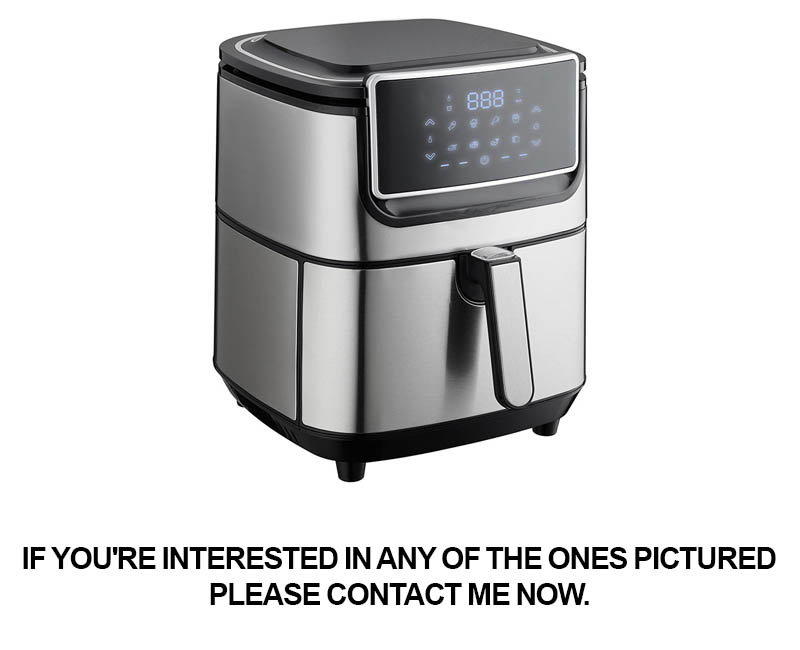
Air fryers have come a long way since their inception, evolving from simple kitchen gadgets to sophisticated appliances that are now a staple in many homes. The technology driving these appliances has seen remarkable advancements, making them not just healthier alternatives to traditional frying methods but also more efficient and user-friendly. Here are some of the top trends in air fryer technology that are shaping the market today:
Modern air fryers are not just about reducing oil content; they are designed to deliver professional-grade cooking results. With features like variable temperature controls and rapid air circulation systems, these appliances can achieve a perfect crispness on the outside while keeping the inside tender and juicy. Advanced heating elements ensure that food cooks evenly, eliminating cold spots and overcooking.
The integration of smart technology into air fryers has been a game-changer. Many models now come with programmable settings that allow users to set cooking times and temperatures for different types of food. Some even have built-in timers and auto shut-off functions, ensuring that meals are ready exactly when you want them. The ability to pre-program recipes has made air fryers a favorite among busy individuals and families.
One of the main attractions of air fryers is their ability to cook food with minimal oil. This health-conscious approach has been further enhanced by the introduction of non-stick surfaces that are free from harmful chemicals like PFOA and PTFE. Users can enjoy crispy fried foods with less guilt, as these appliances are designed to maintain healthier cooking practices.
Energy efficiency is a significant factor in the design of modern air fryers. These appliances use less energy compared to traditional deep fryers, which not only saves money on electricity bills but also reduces the carbon footprint. The rapid air circulation technology used in air fryers means that the heat is used more effectively, resulting in faster cooking times and lower energy consumption.
While originally designed for crispy French fries and fried chicken, air fryers have expanded their capabilities to include a wide range of cooking methods. Users can now bake, roast, grill, and even dehydrate food in their air fryers. The versatility of these appliances has made them a must-have for anyone looking to diversify their cooking techniques without the need for multiple appliances.
The latest air fryers come with user-friendly features that make them easy to use and maintain. From easy-to-clean baskets and drip trays to digital displays and intuitive interfaces, these appliances are designed with the user in mind. Many models also come with recipe books or digital apps that provide inspiration and guidance for new and experienced cooks alike.
Safety has always been a priority in kitchen appliance design, and air fryers are no exception. Modern models include features like cool-touch handles, overheat protection, and child safety locks. These innovations ensure that users can enjoy their air fryers with peace of mind, knowing that their safety and the safety of their loved ones are a top concern.
The rise of the Internet of Things (IoT) has also influenced air fryer technology. Some models are now compatible with smartphones and tablets, allowing users to control their appliances remotely via Wi-Fi. This connectivity not only adds convenience but also opens up new possibilities for smart kitchen integration, where air fryers can be part of a larger ecosystem of kitchen appliances.
As the market becomes more saturated, manufacturers are focusing on customization and personalization to stand out. This includes offering a variety of sizes and capacities to suit different household needs, as well as incorporating unique features like air-fryer lids for steaming or additional attachments for specific cooking tasks.
In line with global trends towards sustainability, air fryer manufacturers are increasingly using eco-friendly materials in their appliances. This includes recycled plastics, sustainable woods for handles, and energy-efficient components. These efforts not only contribute to a greener planet but also appeal to environmentally conscious consumers.
The evolution of air fryer technology continues to push the boundaries of what these appliances can do. As the market grows and consumer demands change, we can expect to see even more innovative features and designs that make air frying an even more appealing and versatile cooking option.

Air fryer technology has seen a remarkable evolution over the years, and FOB Ningbo air fryer suppliers have played a pivotal role in this transformation. What sets them apart is a blend of innovative features and cutting-edge design that cater to the modern consumer’s needs. Here’s a look at some of the standout innovations from these suppliers:
Smart Sensors and Precision CookingFOB Ningbo air fryer suppliers have integrated smart sensors that monitor the internal temperature of the appliance with precision. This ensures that food is cooked to perfection, with the right amount of crispiness on the outside and tenderness on the inside. The technology often includes auto-shutoff features, adding an extra layer of safety.
Eco-Friendly and Energy-Efficient DesignsAn increasing focus on sustainability has led to the development of eco-friendly air fryers. FOB Ningbo suppliers have embraced this trend by creating appliances that consume less energy than traditional deep fryers. These energy-efficient models not only reduce utility bills but also contribute to a greener planet.
Multi-Functional Cooking CapabilitiesOne of the standout features of FOB Ningbo air fryers is their versatility. These units are not just for frying; they can roast, bake, and even dehydrate food. This multifunctionality means that consumers can use a single appliance for a variety of cooking tasks, simplifying kitchen chores and saving space.
Easy-to-Use Interface and ProgrammingModern FOB Ningbo air fryers come with intuitive interfaces that make cooking a breeze. Touchscreen controls and pre-programmed settings allow users to select the desired cooking mode and time without the need for guesswork. This user-friendly design is particularly appealing to those who are not as technologically inclined.
Non-Stick Coatings and Easy CleaningMaintaining an air fryer can be a hassle, but not with FOB Ningbo suppliers. Their air fryers are equipped with non-stick coatings that prevent food from sticking to the basket, making cleanup a cinch. The removable parts are often dishwasher-safe, further simplifying the cleaning process.
Enhanced Safety FeaturesSafety is paramount in kitchen appliances, and FOB Ningbo air fryer suppliers have not overlooked this aspect. Many of their models include features like cool-touch handles, child locks, and overheat protection. These innovations ensure that the appliance remains safe to use, even in the hands of the most curious children.
Portability and Compact DesignFor those with limited kitchen space or who enjoy cooking on the go, FOB Ningbo air fryers offer compact and portable options. These models are lightweight and can be easily transported, making them perfect for camping trips, picnics, or even for those who rent apartments.
Customizable and Modular ComponentsSome FOB Ningbo air fryers are designed with modular components that can be customized according to the user’s needs. This means that consumers can add or remove accessories to suit their specific cooking preferences, whether it’s a larger basket for batch cooking or a special accessory for specific types of food.
Health and Wellness FocusWith a growing health-conscious consumer base, FOB Ningbo air fryer suppliers have focused on creating appliances that promote a healthier lifestyle. The reduced oil usage in air frying compared to traditional frying methods is a testament to this commitment. These air fryers are a favorite among those looking to reduce their fat intake without compromising on taste.
Integration with Smart Home SystemsThe smart home revolution has also influenced the air fryer market. FOB Ningbo suppliers are now offering models that can be controlled remotely via smartphones or integrated with smart home systems. Users can start their cooking before they even step into the kitchen, making meal preparation more convenient than ever.
These innovations highlight the dedication of FOB Ningbo air fryer suppliers to staying ahead of the curve. By continually pushing the boundaries of technology and design, they have managed to create a product that appeals to a wide range of consumers, from the health-conscious to the tech-savvy.
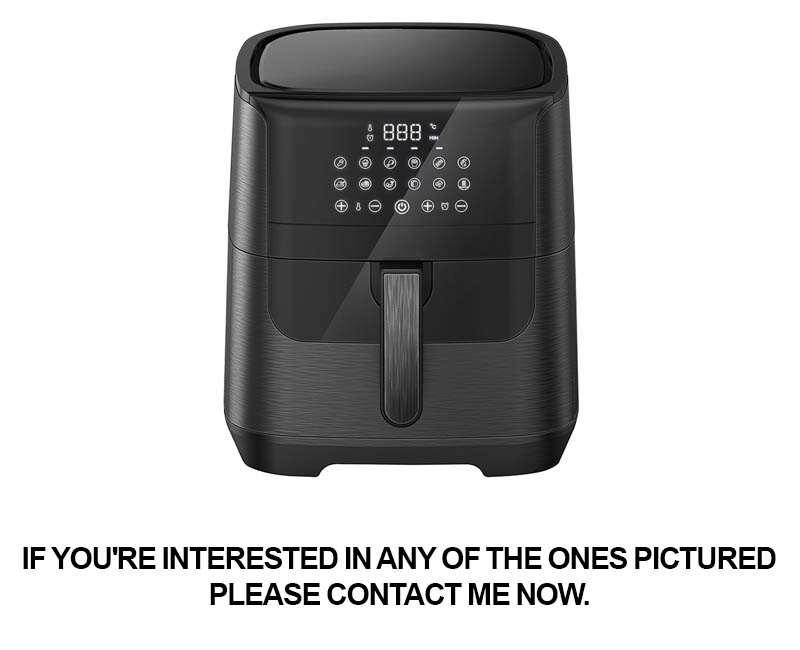
The air fryer market has seen a surge in popularity, and with it, a dynamic shift in consumer preferences and industry trends. Here’s a look at what’s currently hot and what’s not in the world of air fryer technology.
Gone are the days when air fryers were just a quirky kitchen gadget. Today, they’re a staple in many households, thanks to their ability to offer healthier, oil-free cooking options. However, not all air fryers are created equal, and the market is flooded with brands vying for attention.
One trend that’s heating up is the integration of smart technology. Air fryer suppliers in FOB Ningbo, for instance, are incorporating features like WiFi connectivity and smartphone apps, allowing users to monitor and control their appliances remotely. This connectivity isn’t just about convenience; it’s about data and personalization.
Consumers are now more interested in devices that offer customization and the ability to adjust cooking settings according to individual preferences. Air fryer suppliers in FOB Ningbo are responding by creating models that cater to these needs, with adjustable temperature controls and various cooking modes that can mimic the flavor profiles of deep-frying, grilling, and baking.
Energy efficiency is another hot topic. With rising energy costs and growing environmental concerns, air fryers that consume less power are becoming a major draw. FOB Ningbo suppliers are pushing the boundaries by developing air fryers with advanced heat distribution systems that optimize energy use without compromising performance.
On the flip side, the “what’s not” category includes features that once seemed innovative but are now seen as unnecessary. For example, air fryers with excessively complicated control panels and numerous pre-programmed settings that don’t cater to specific recipes have fallen out of favor. Consumers are looking for simplicity and ease of use, not a labyrinth of buttons and modes.
Moreover, the buzz around “healthy cooking” has led to a surge in demand for air fryers that can handle a wider range of ingredients and cooking methods. Suppliers who haven’t kept pace with this trend, offering limited functionality and only suitable for a narrow range of foods, are missing out on the market’s potential.
Another aspect that’s not as hot as it used to be is the focus on aesthetics alone. While a sleek design is still important, customers are increasingly looking for functionality over form. Air fryers that look good but don’t perform well are being overlooked in favor of those that offer a practical solution to their cooking needs.
The rise of organic and natural foods has also had an impact on the market. Air fryer suppliers are responding by creating products that can be used with organic ingredients, ensuring that health-conscious consumers can enjoy their favorite dishes without compromising on quality or taste.
In terms of materials, the use of BPA-free plastics and stainless steel components is becoming more prevalent. This shift is in response to consumer concerns about the safety of materials used in kitchen appliances, with a growing preference for eco-friendly and durable products.
The market is also seeing a trend towards modular design, where air fryers can be part of a larger system of cooking appliances. This allows for greater flexibility and the ability to expand one’s kitchen setup over time. Suppliers in FOB Ningbo are at the forefront of this movement, offering versatile products that can be adapted to changing needs.
Finally, there’s a notable lack of interest in air fryers that produce excessive noise. Consumers are seeking quiet operation, especially in smaller living spaces where noise can be a concern. Air fryer suppliers are therefore focusing on quieter motors and better insulation to reduce noise levels.
In conclusion, the market dynamics for air fryers are shifting, with a focus on smart technology, energy efficiency, customization, and safety. As the industry evolves, those who adapt to these trends and prioritize consumer needs will be the ones that stand out in the competitive landscape.
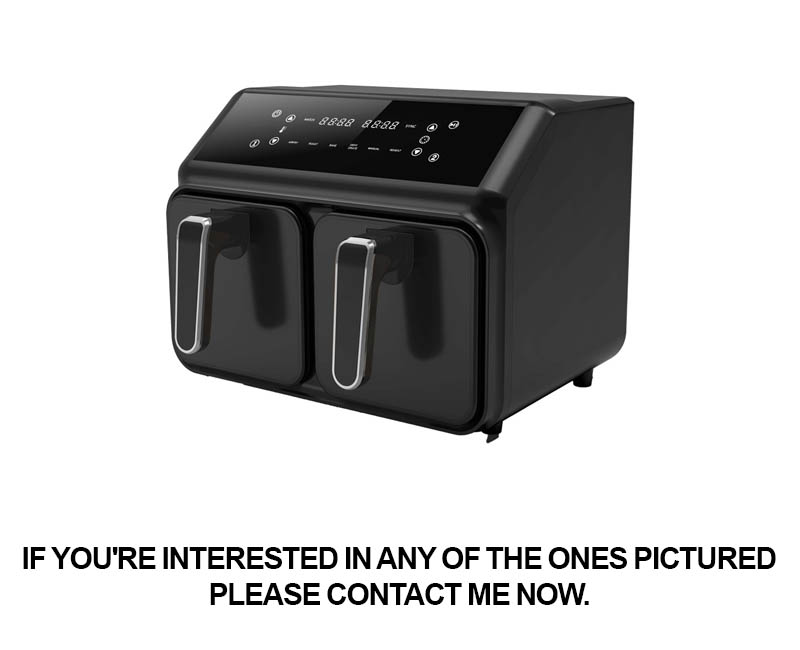
In the ever-evolving landscape of kitchen appliances, understanding consumer preferences is crucial for suppliers to stay ahead. Data-driven insights have become the backbone of successful marketing strategies, and when it comes to air fryers, these insights are particularly revealing. Let’s delve into the key findings that are shaping the market.
The surge in health consciousness has propelled the demand for air fryers, with consumers seeking alternatives to traditional deep-frying methods. This shift is reflected in the preference for models that offer healthier cooking options, such as air-frying at lower temperatures and with less oil. Brands that have capitalized on this trend by emphasizing the health benefits of their products have seen a notable increase in sales.
Consumers are not just looking for healthier options; they also value convenience. The rise of smart technology in kitchen appliances has made its way into the air fryer market. Features like remote control, automatic shut-off, and customizable cooking programs are becoming increasingly popular, as they cater to the busy lifestyles of many consumers. The ability to monitor and control the cooking process from a smartphone app is a game-changer for those who want to cook without being tied to the kitchen.
When it comes to design, consumers are gravitating towards sleek, modern aesthetics. Air fryers that blend seamlessly into kitchen decor or come in a variety of colors and finishes are finding their way into more homes. The emphasis on design is not just about aesthetics; it’s also about functionality. Users appreciate compact and space-saving designs that don’t compromise on performance.
Another significant trend is the integration of air fryers with other kitchen appliances. Combining an air fryer with an oven or a microwave can offer users a multi-functional appliance that can handle a variety of cooking tasks. This type of integration is particularly appealing to those who are looking to streamline their kitchen equipment and reduce clutter.
Portability is also a key factor in consumer preferences. Many users are interested in air fryers that can be easily moved from one location to another, whether it’s for outdoor cooking or simply for convenience. Lightweight designs with sturdy handles and foldable legs are becoming more sought after.
The rise of social media has had a profound impact on consumer preferences. Influencers and home cooks are showcasing their favorite air fryer recipes and cooking techniques, which can significantly influence purchasing decisions. Consumers are looking for air fryers that not only perform well but also have the potential to become a centerpiece in their social media feeds.
Additionally, the importance of sustainability cannot be overstated. Consumers are increasingly interested in products that are eco-friendly and have a lower carbon footprint. This includes air fryers made from recycled materials, energy-efficient models, and brands that engage in sustainable practices.
In terms of brand loyalty, while new entrants are making waves, established brands are finding ways to maintain their market share by staying attuned to these data-driven insights. They are investing in research and development to create innovative features that resonate with consumers’ changing needs.
The rise of subscription services and the “try before you buy” concept is also influencing consumer preferences. Many suppliers are offering trial periods or subscription models that allow consumers to test out different air fryer models before making a commitment to purchase.
Finally, the importance of customer service and warranty offerings cannot be ignored. Consumers are more likely to purchase from brands that provide excellent customer support and robust warranty programs, knowing that they have a reliable resource if issues arise.
These data-driven insights into consumer preferences are a treasure trove for air fryer suppliers. By understanding and responding to these trends, suppliers can create products that not only meet but exceed consumer expectations, ultimately driving market success.
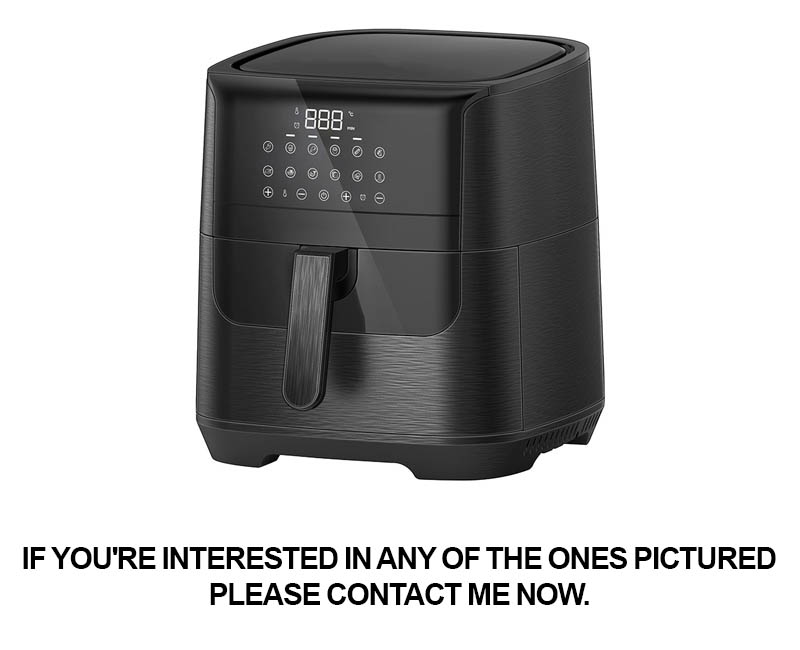
The integration of sustainability into air fryer design has become a pivotal factor in the kitchen appliance industry. Here’s a deeper look into how eco-friendly practices are reshaping the landscape of air fryer technology.
Air fryers have traditionally been associated with convenience and healthier cooking methods. However, as the market evolves, a new wave of sustainability is taking hold, pushing manufacturers to rethink their design and production processes. One significant change is the use of recycled materials.
Manufacturers are increasingly incorporating recycled plastics and metals into their air fryer designs. Not only does this reduce the demand for new resources, but it also minimizes waste and helps to lower the carbon footprint. Customers are becoming more conscious of the environmental impact of their purchases, and this shift towards sustainability is resonating with eco-conscious consumers.
Energy efficiency is another critical aspect of sustainable air fryer design. The latest models are equipped with advanced technology that significantly reduces energy consumption. Smart sensors and intelligent cooking settings allow for precise temperature control, ensuring that the air fryer operates at optimal levels without wasting power.
Additionally, the compact and space-saving design of modern air fryers is not just a matter of convenience; it also contributes to sustainability. Smaller appliances consume less energy to produce and operate, and they also take up less space in landfills once they reach the end of their lifecycle.
The importance of energy efficiency is not lost on consumers. Many shoppers now look for appliances with an Energy Star rating or similar certifications, indicating that they meet stringent energy-saving standards. As such, air fryer suppliers in FOB Ningbo are focusing on creating products that not only meet these criteria but also stand out in terms of their sustainability features.
One innovative approach to sustainability in air fryer design is the use of biodegradable or compostable components. For instance, some models now come with parts made from natural fibers or plant-based materials. This not only reduces the reliance on petrochemicals but also ensures that the appliance can be broken down at the end of its life in a more environmentally friendly manner.
In terms of functionality, air fryers are becoming more versatile and user-friendly. The inclusion of smart features, such as apps that allow for remote monitoring and control, can help users make more informed decisions about their cooking habits. By tracking usage and energy consumption, users can adjust their cooking times and temperatures to further reduce their environmental impact.
The packaging of air fryers is also undergoing a transformation. Suppliers are moving away from single-use plastics and opting for recyclable or compostable materials. This not only helps in reducing the waste generated by shipping but also sets a positive example for consumers, who often factor in the sustainability of packaging when making purchasing decisions.
Another area where sustainability is making a mark is in the lifespan of the air fryer itself. Durability is a key factor, as longer-lasting appliances mean fewer are thrown away. This trend is being supported by suppliers who invest in high-quality components and rigorous testing to ensure their products stand the test of time.
The rise of service-based models is also worth noting. Instead of purchasing an appliance outright, consumers can subscribe to a service that provides them with the latest air fryer, along with maintenance and recycling services at the end of the product’s life. This approach not only extends the life of the appliance but also ensures it is handled responsibly when it is no longer in use.
In conclusion, sustainability in air fryer design is not just a passing trend; it’s a strategic shift that addresses both environmental concerns and consumer demands. As the market continues to evolve, we can expect to see even more innovative and eco-friendly solutions from FOB Ningbo air fryer suppliers.
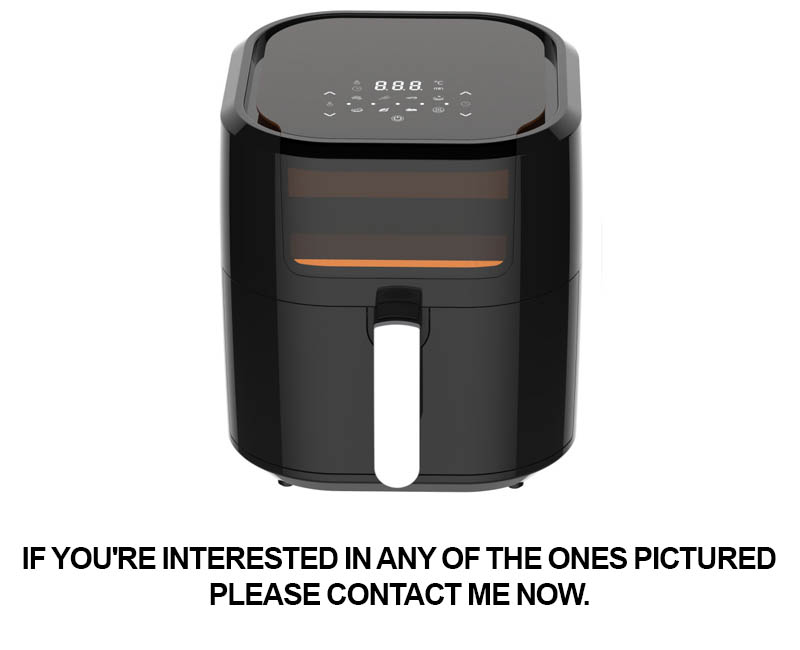
In the competitive landscape of kitchen appliances, FOB Ningbo air fryer suppliers have emerged as trendsetters, not just in terms of innovation but also in the quality and craftsmanship of their products. Here’s a closer look at how they are leading the charge:
The commitment to high-quality materials is a cornerstone of FOB Ningbo’s approach. Suppliers in this region prioritize the use of durable and safe components, ensuring that each air fryer is built to last. From the exterior to the internal components, the focus is on longevity and performance.
Customization has become a hallmark of FOB Ningbo suppliers. They understand that not all kitchens are the same, and they offer a range of sizes, designs, and features to cater to diverse consumer needs. Whether it’s a compact model for small apartments or a larger capacity unit for families, the ability to tailor the product to the customer is a significant advantage.
Energy efficiency is a hot topic in today’s market, and FOB Ningbo suppliers have jumped on board. Their air fryers are designed with cutting-edge energy-saving technology that reduces power consumption without compromising on cooking performance. This not only saves money for the consumer but also aligns with global sustainability goals.
Innovation isn’t just about new features; it’s also about making existing ones better. FOB Ningbo suppliers have introduced smart technology into their air fryers, allowing users to control cooking times and temperatures remotely via smartphone apps. This integration of IoT (Internet of Things) brings convenience and control to the kitchen.
Safety is paramount in the kitchen, and FOB Ningbo suppliers have made it a priority. Their air fryers are equipped with multiple safety features, including automatic shut-off functions that activate if the unit overheats or if it’s left unattended for an extended period. These features provide peace of mind to customers.
Quality assurance is a rigorous process at FOB Ningbo. Suppliers adhere to strict quality control measures, ensuring that each air fryer meets international standards before it leaves the factory. This attention to detail means that customers receive a product that is reliable and performs as advertised.
The packaging of products also reflects the high standards set by FOB Ningbo suppliers. Robust and protective packaging ensures that the air fryers arrive at their destination in perfect condition, minimizing the risk of damage during transit.
Customer service is another area where FOB Ningbo suppliers excel. They offer comprehensive support, from pre-sales inquiries to after-sales care. This dedication to customer satisfaction helps build trust and loyalty, which is crucial in the long term.
Innovation in design has led to the creation of air fryers that are not only functional but also aesthetically pleasing. FOB Ningbo suppliers have managed to blend modern aesthetics with practicality, offering a range of units that complement various kitchen decors.
In the realm of after-sales service, FOB Ningbo suppliers stand out. They provide warranty coverage that exceeds industry standards, and their customer service teams are trained to handle any issues promptly and effectively.
The rise of health-conscious consumers has also influenced the direction of FOB Ningbo suppliers. They have responded by offering air fryers that not only cook food with minimal oil but also provide healthier cooking options compared to traditional deep-frying methods.
In conclusion, FOB Ningbo air fryer suppliers are leading the charge in quality by focusing on material selection, customization, energy efficiency, smart technology, safety, quality assurance, packaging, customer service, design, and after-sales support. Their commitment to excellence has positioned them as a go-to source for high-quality air fryers in the global market.
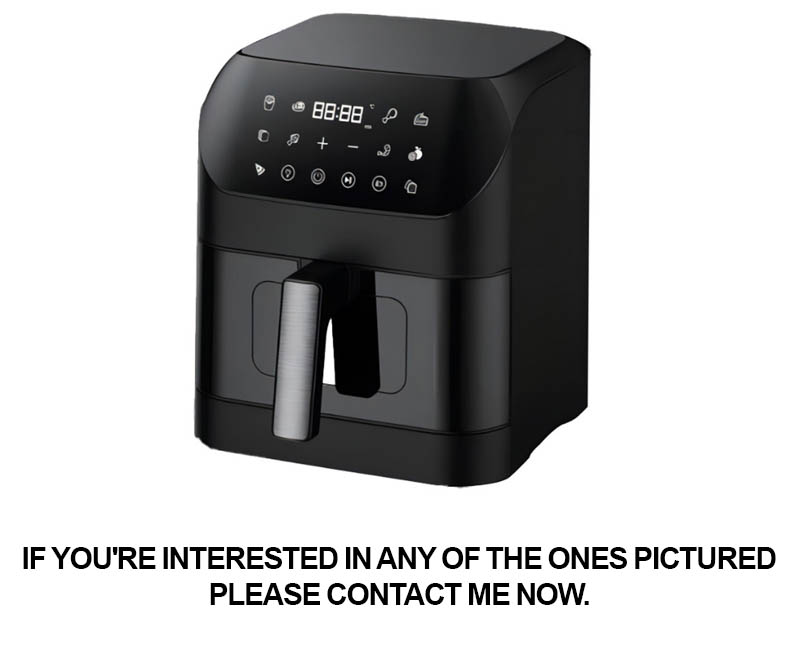
In today’s competitive market, the art of marketing has evolved into a sophisticated dance of consumer insights, innovative campaigns, and strategic partnerships. The pros have honed their craft to understand what resonates with audiences and how to leverage technology to create impactful marketing strategies. Here’s a glimpse into the strategies that have been making waves:
Storytelling that CaptivatesMarketers have realized that the power of a compelling story can transcend product features. They’re crafting narratives that connect on an emotional level, using storytelling to build brands that consumers can relate to and champion.
Social Media as a Platform for EngagementSocial media has become more than a communication channel; it’s a platform for real-time engagement. Pros are using it to create interactive content, host live Q&A sessions, and gather feedback, turning followers into brand ambassadors.
Personalization at ScaleGone are the days of one-size-fits-all marketing. Advanced data analytics and AI-driven tools allow marketers to personalize messages and offers to individual consumers, ensuring that marketing efforts feel relevant and tailored.
Leveraging Influencers for AuthenticityInfluencer marketing has gained traction for its ability to deliver authenticity. Pros are collaborating with influencers who have genuine connections with their followers, using them to introduce new products and build trust.
Data-Driven Decision MakingThe days of gut feeling are over. Today’s marketing strategies are based on data-driven insights. Pros are analyzing customer behavior, market trends, and campaign performance to make informed decisions and optimize their strategies.
The Power of Video ContentVideo content is king in the digital realm. Pros are creating engaging video campaigns that capture attention, educate consumers, and drive conversions. From tutorials to behind-the-scenes looks, video content is a powerful tool in the marketing arsenal.
Email Marketing with a Personal TouchEmail remains a vital channel, but the key is personalization. Pros are crafting emails that feel like a personal message, using data to segment lists and tailor content to individual preferences.
Interactive and Immersive ExperiencesTo stand out, pros are creating interactive and immersive experiences that allow consumers to engage with a brand in new ways. Virtual reality (VR) and augmented reality (AR) are just a few technologies being leveraged to create memorable experiences.
Navigating the E-commerce LandscapeWith the rise of e-commerce, marketing strategies must adapt. Pros are optimizing websites for SEO, ensuring fast loading times, and creating user-friendly interfaces to enhance the shopping experience.
Environmental and Social ResponsibilityConsumers are increasingly looking for brands that take a stand on environmental and social issues. Pros are integrating these values into their marketing, showcasing their commitment to sustainability and social impact.
The Role of AI in Predictive AnalyticsArtificial intelligence is changing the game when it comes to predictive analytics. Pros are using AI to predict consumer behavior, identify emerging trends, and optimize marketing budgets accordingly.
Collaborations and PartnershipsThe strength of partnerships cannot be underestimated. Pros are seeking strategic alliances with complementary brands to expand reach and offer unique value to customers.
Customer-Centric ApproachThe ultimate goal of marketing is to satisfy the customer. Pros are focusing on customer feedback, continuously iterating products and services, and ensuring that every marketing move enhances the customer experience.
Continuous Learning and AdaptationThe marketing landscape is always evolving. Pros understand the importance of staying up-to-date with the latest trends and technologies, constantly learning and adapting their strategies to remain competitive.
The Art of Closing the SaleFinally, the art of marketing is not just about attracting attention but also about closing the sale. Pros are employing tactics like retargeting, personalized recommendations, and compelling calls-to-action to guide consumers through the sales funnel.
In a world where consumer attention is fragmented and technology is rapidly changing, the art of marketing requires a blend of creativity, technology, and a deep understanding of human behavior. The pros who master this blend are the ones who will continue to lead the charge.
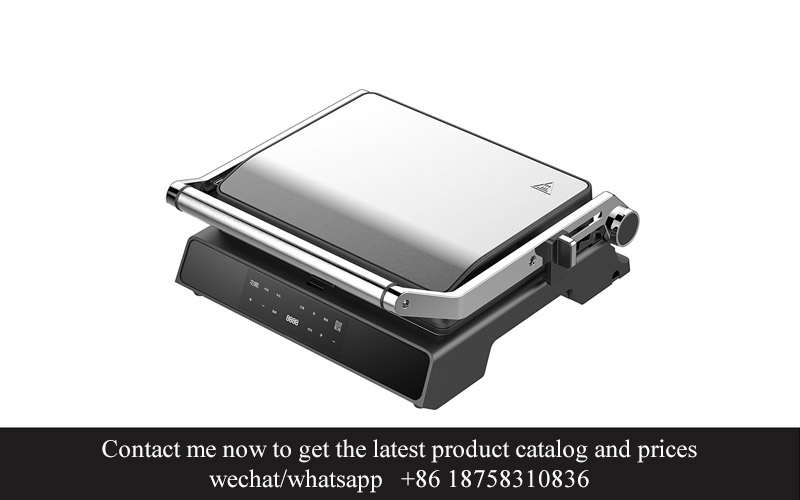
Air fryers have revolutionized the way we cook, and as technology advances, the future of these kitchen gadgets looks promising. Here’s a glimpse into the potential breakthroughs and predictions shaping the future of air fryers:
The integration of smart technology is on the rise, with air fryers becoming more connected than ever. Imagine an air fryer that can sync with your smartphone, offering personalized recipes and cooking times based on your dietary preferences and the ingredients you have on hand.
Energy efficiency is a growing concern, and the future of air fryers may see a shift towards more eco-friendly models. Innovations like solar-powered air fryers or those that use less energy to maintain the same cooking performance could become more common, appealing to environmentally conscious consumers.
One of the biggest challenges with air fryers has been the issue of food sticking and burning. Future models might incorporate advanced non-stick coatings that are even more durable and heat-resistant, ensuring that your culinary creations come out perfectly every time without the need for excessive oil.
The market is already seeing a surge in air fryers that offer a variety of cooking functions, from roasting to baking. The future could bring even more versatility, with air fryers that can defrost, reheat, and even sterilize, turning them into all-in-one kitchen appliances.
Health and wellness are at the forefront of consumer minds, and air fryers are no exception. Future designs might include features that make it easier to track nutritional information, with built-in calorie counters or apps that provide detailed breakdowns of the food being cooked.
The rise of subscription-based services has been a game-changer in many industries, and air fryers could follow suit. Imagine a service that delivers fresh, pre-portioned ingredients along with an air fryer recipe each week, making it easier for busy individuals to enjoy healthy, home-cooked meals without the hassle of meal planning.
Customization is key, and the future of air fryers may see a move towards modular designs. Users could purchase different attachments or cooking baskets to cater to their specific needs, whether it’s grilling vegetables, making crispy tofu, or even air frying desserts.
Safety features are always a priority, and the future of air fryers could include more advanced safety mechanisms. From automatic shut-offs to smart sensors that detect overcooking or uneven heating, these features would provide peace of mind for users.
The global market for air fryers is expanding rapidly, with new players entering the scene and established brands looking to innovate. The future might see a collaboration between tech giants and kitchen appliance manufacturers, leading to air fryers that are not just cooking devices but also smart home hubs, controlling other kitchen appliances and integrating with home automation systems.
Lastly, the future of air fryers is likely to be driven by consumer feedback. As users become more engaged with their appliances, we can expect to see a more responsive industry that listens to what customers want and delivers products that not only meet but exceed expectations.